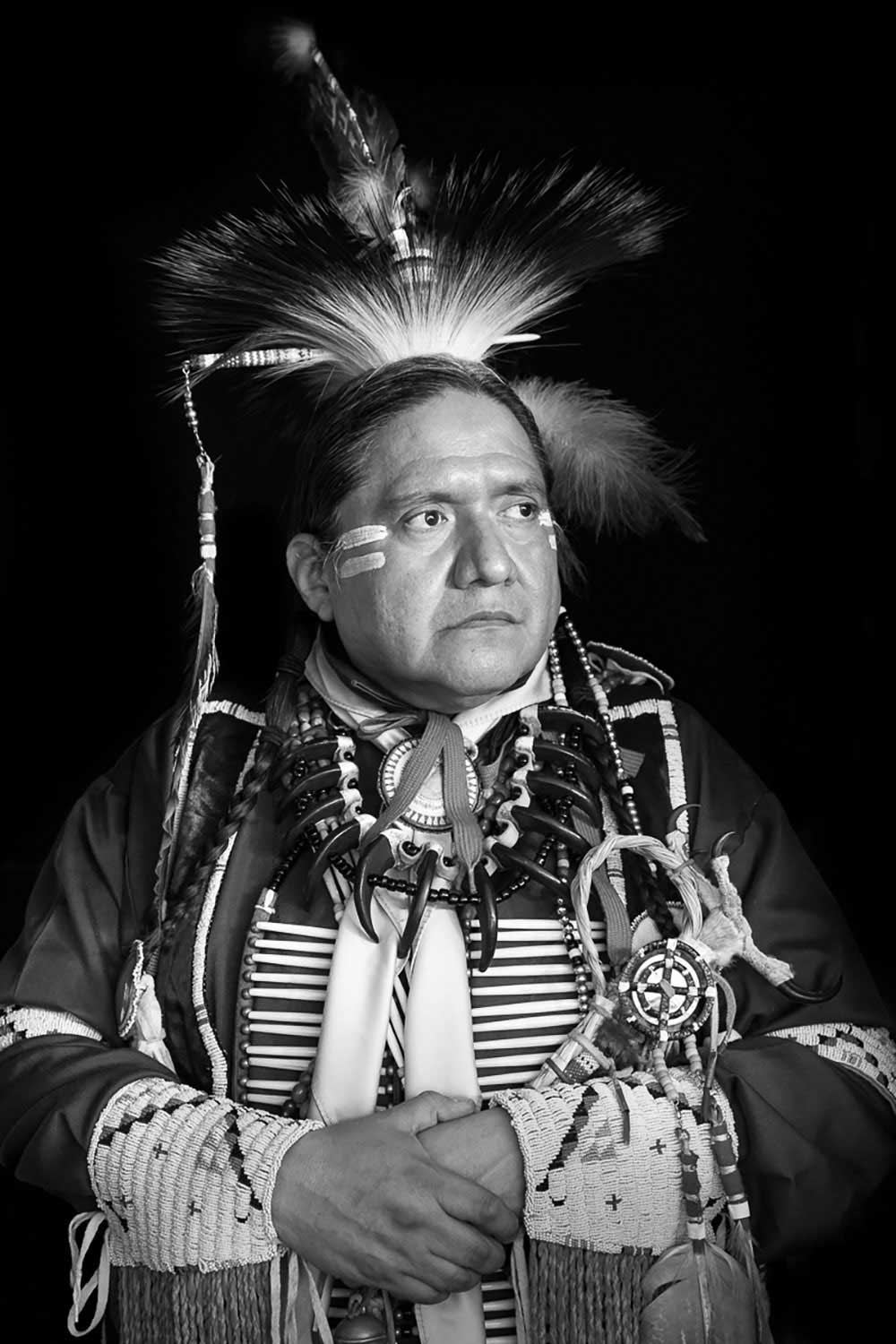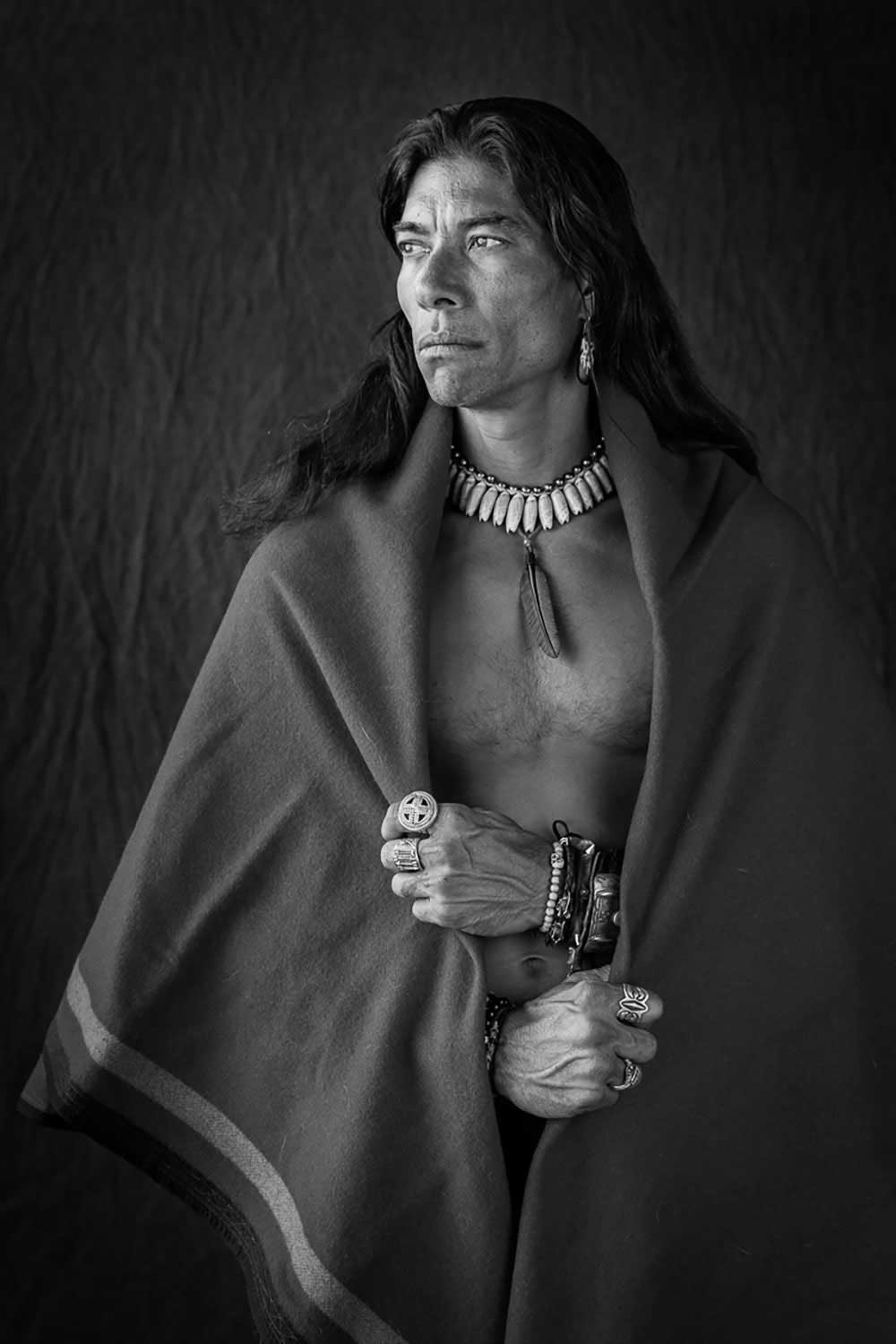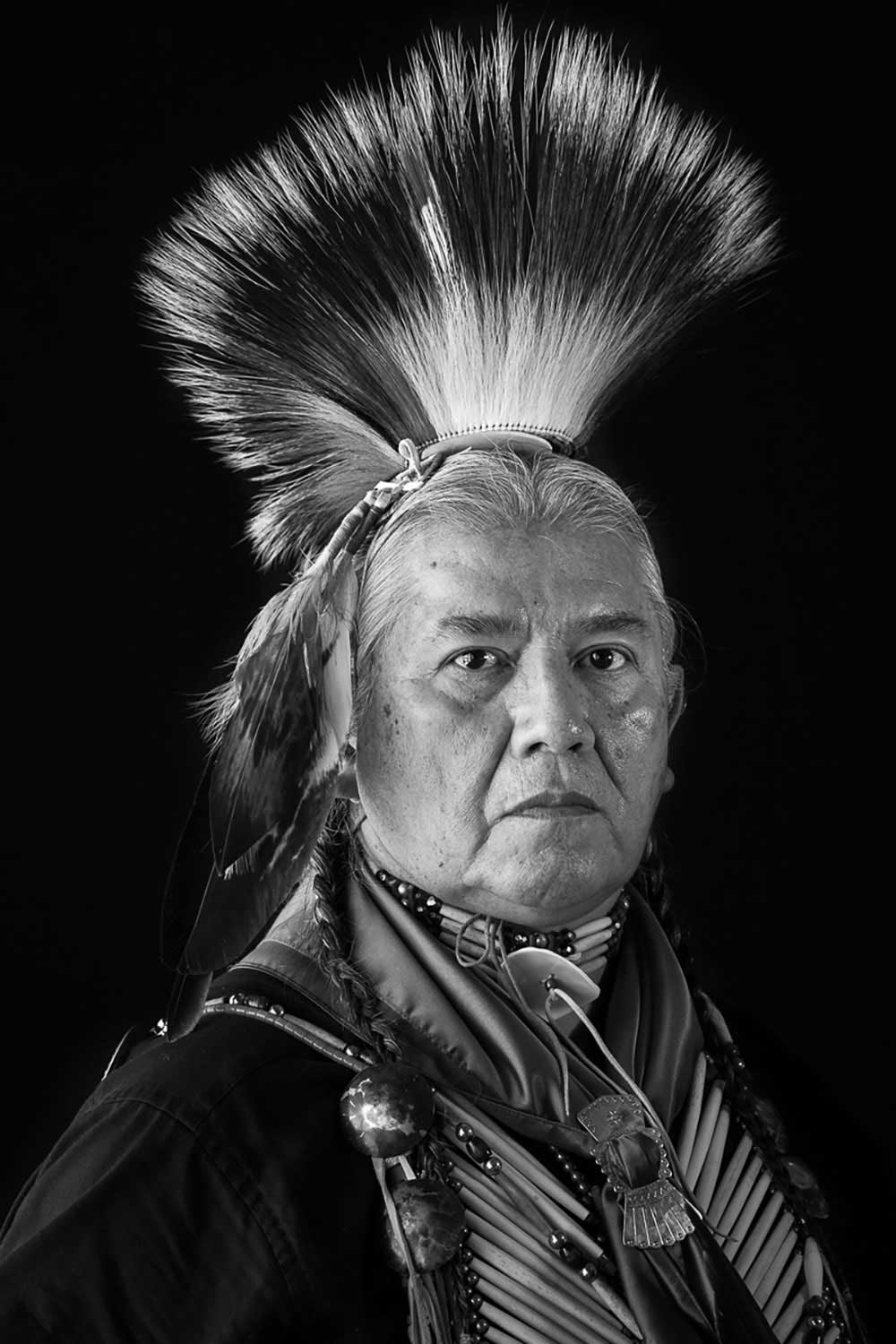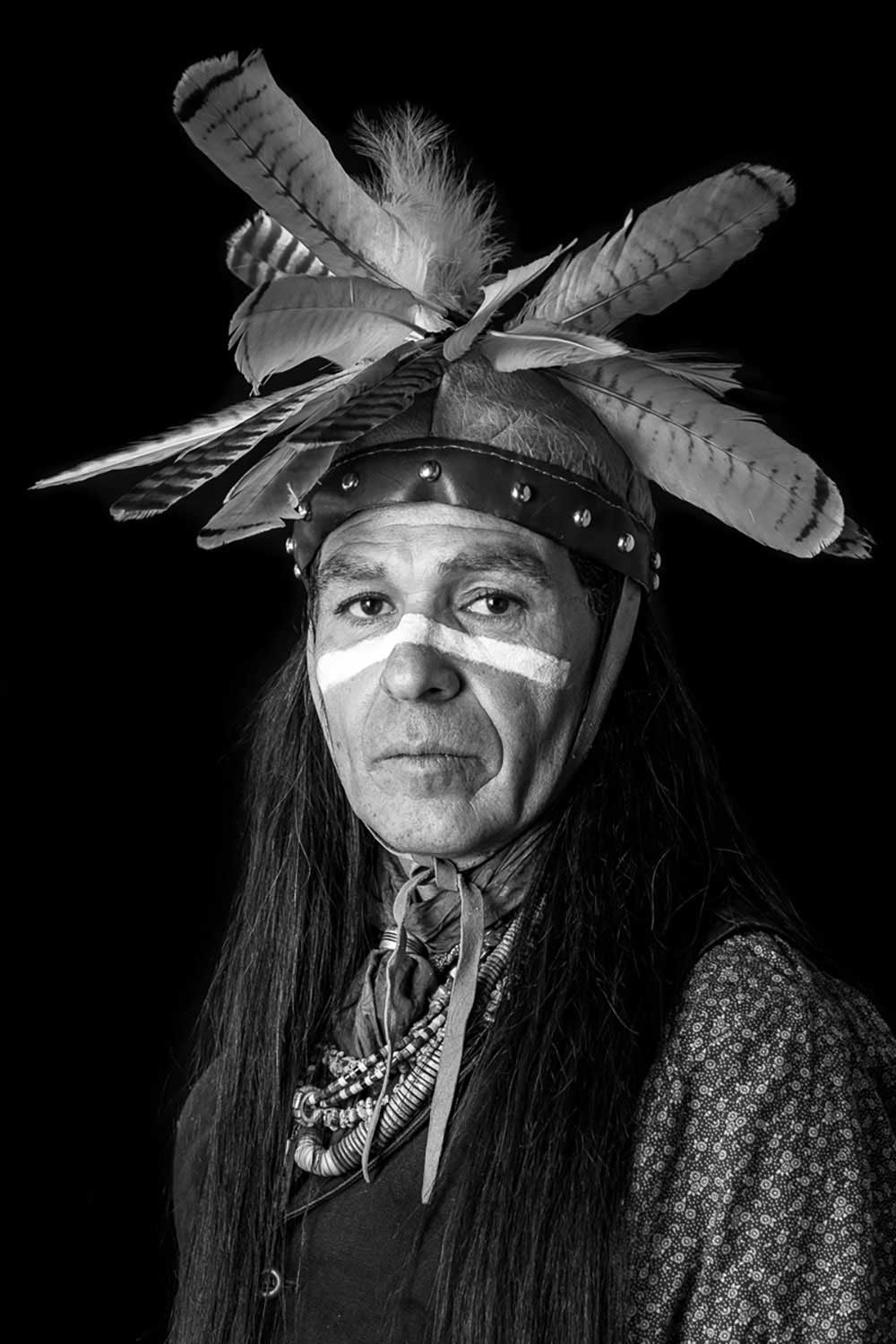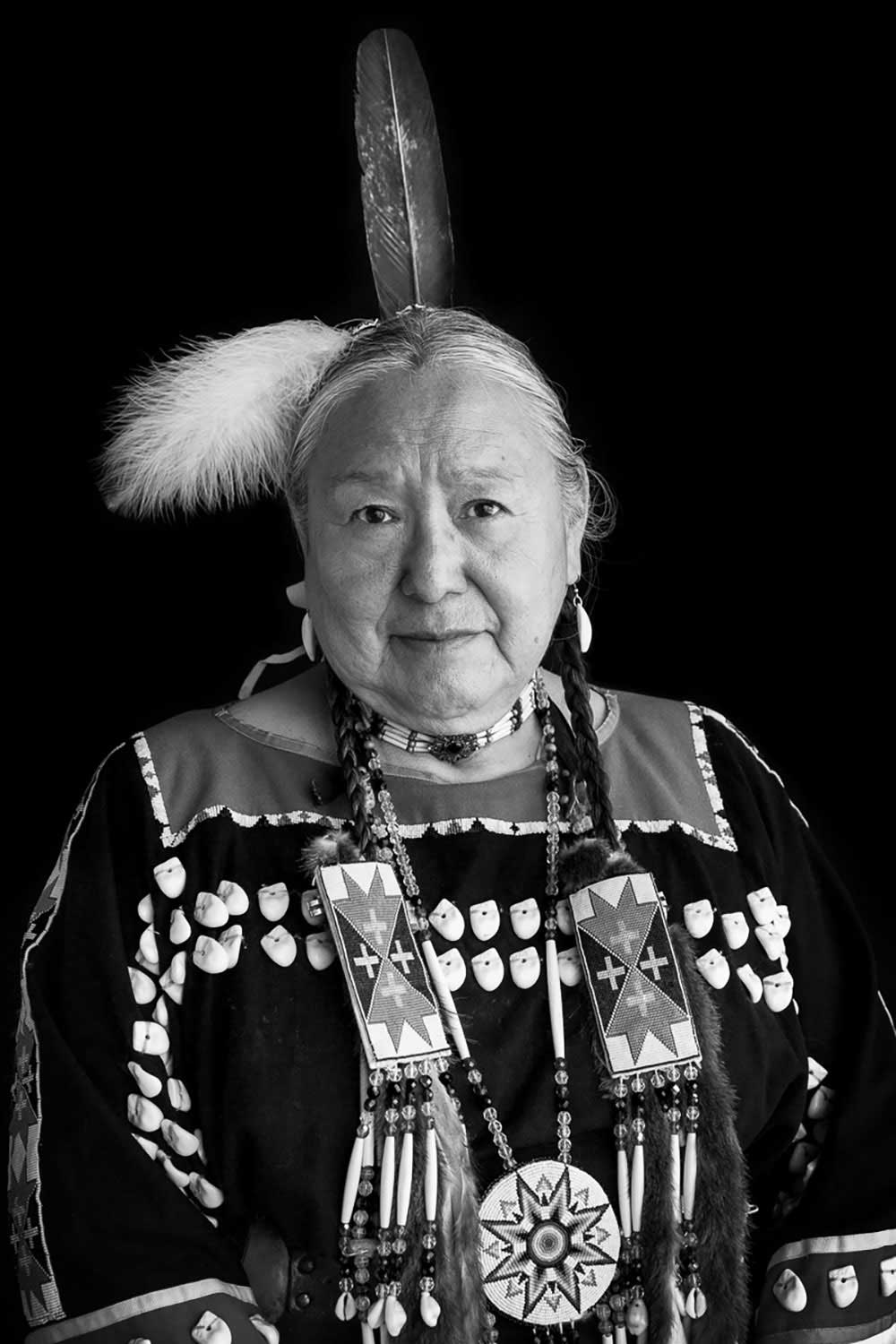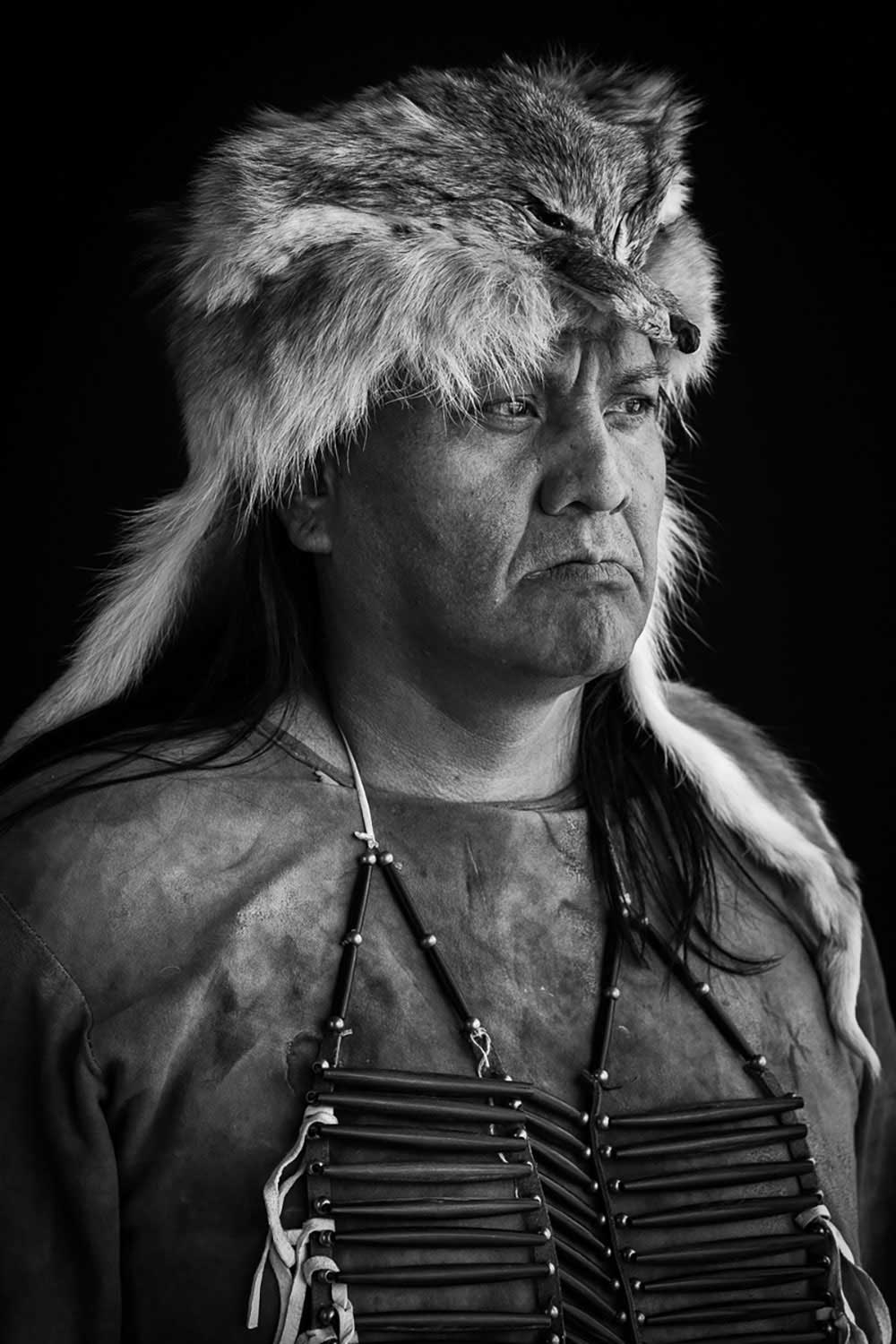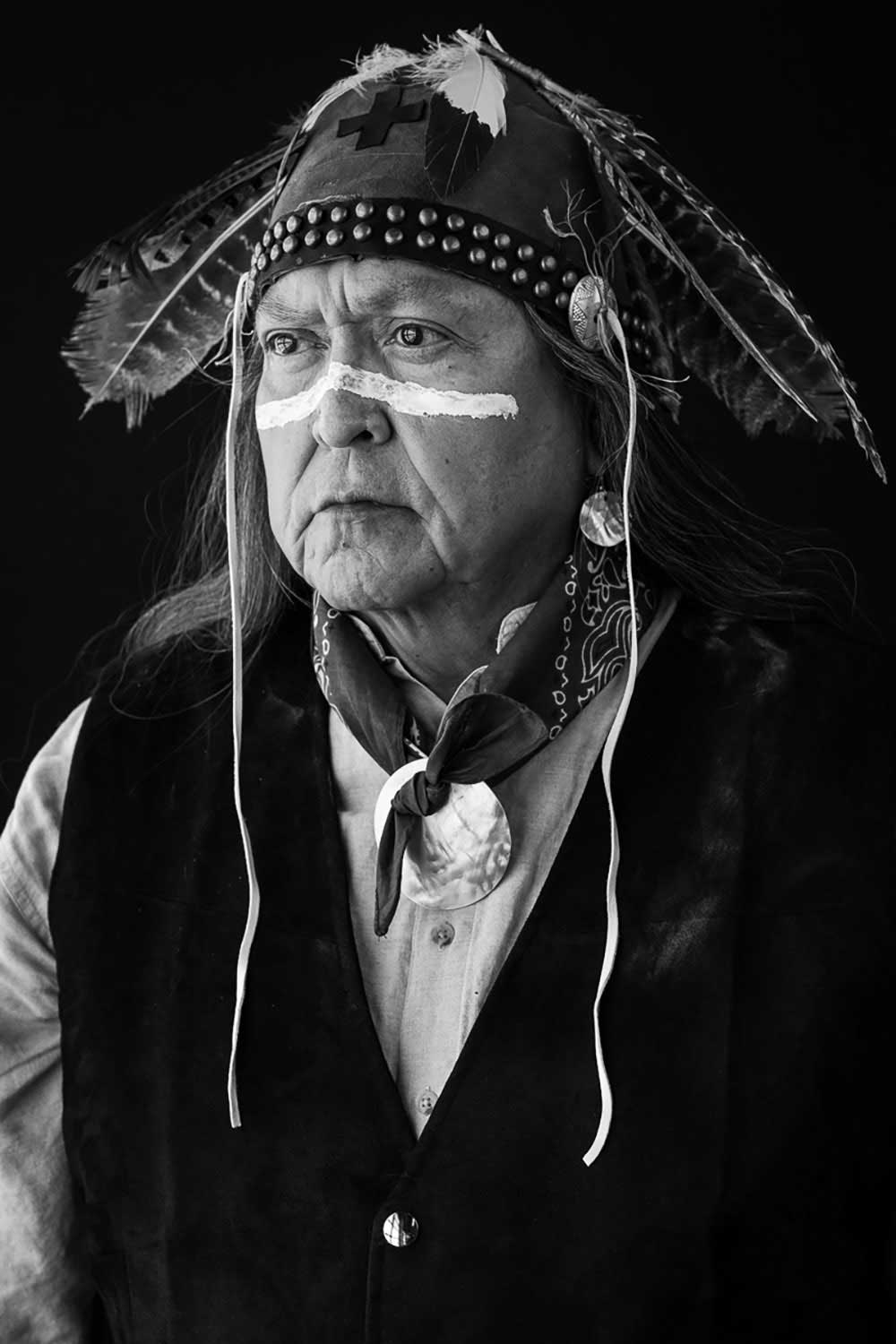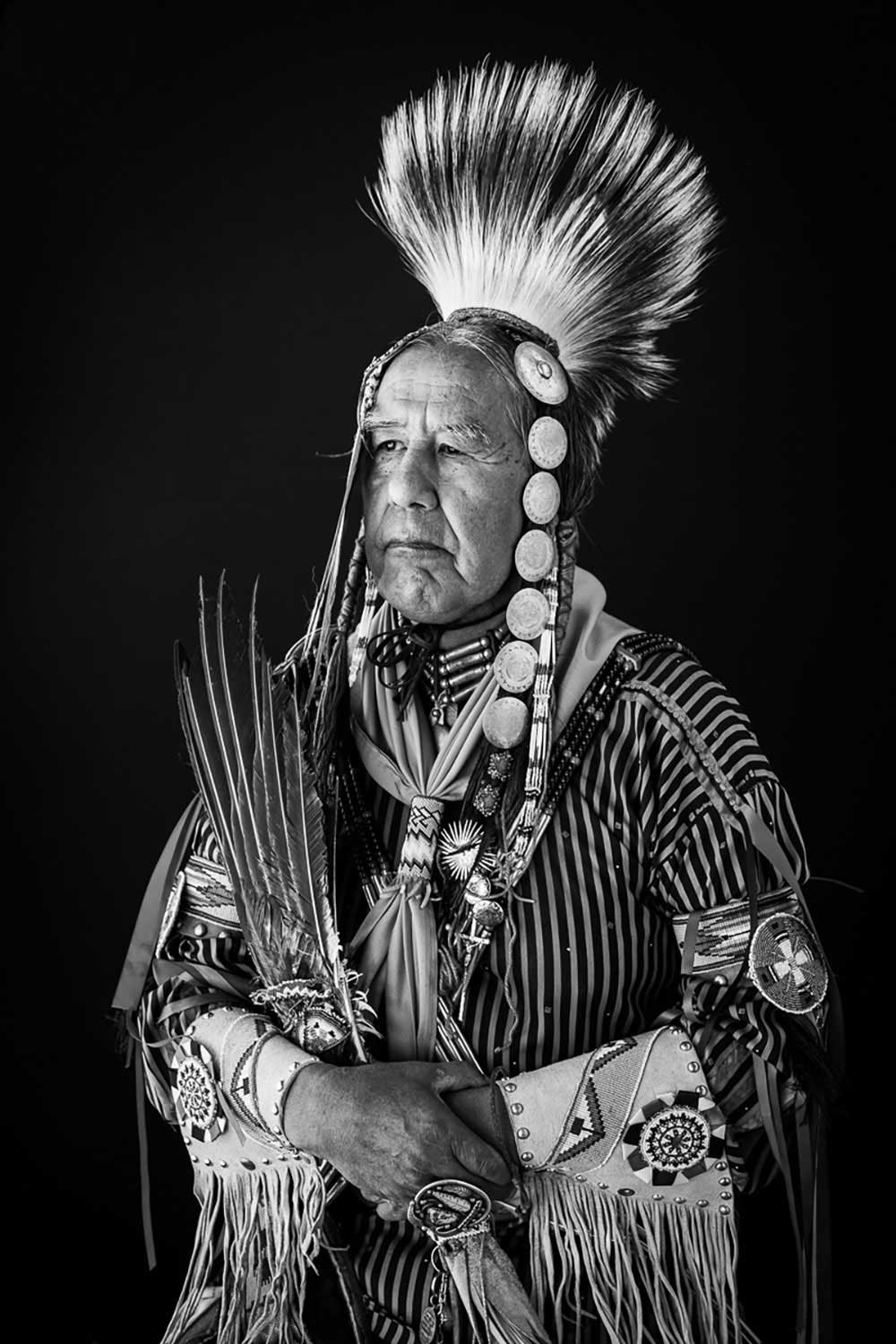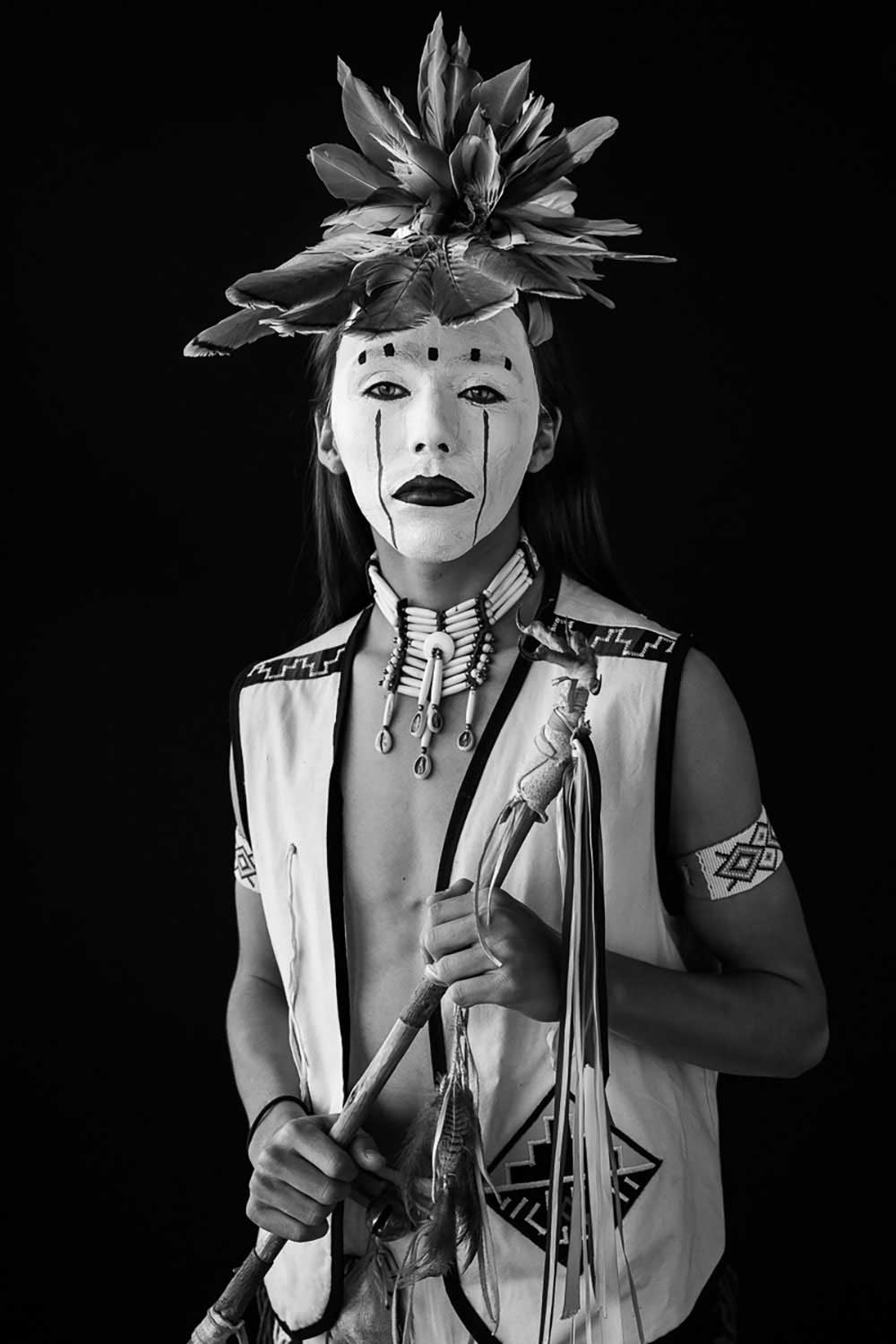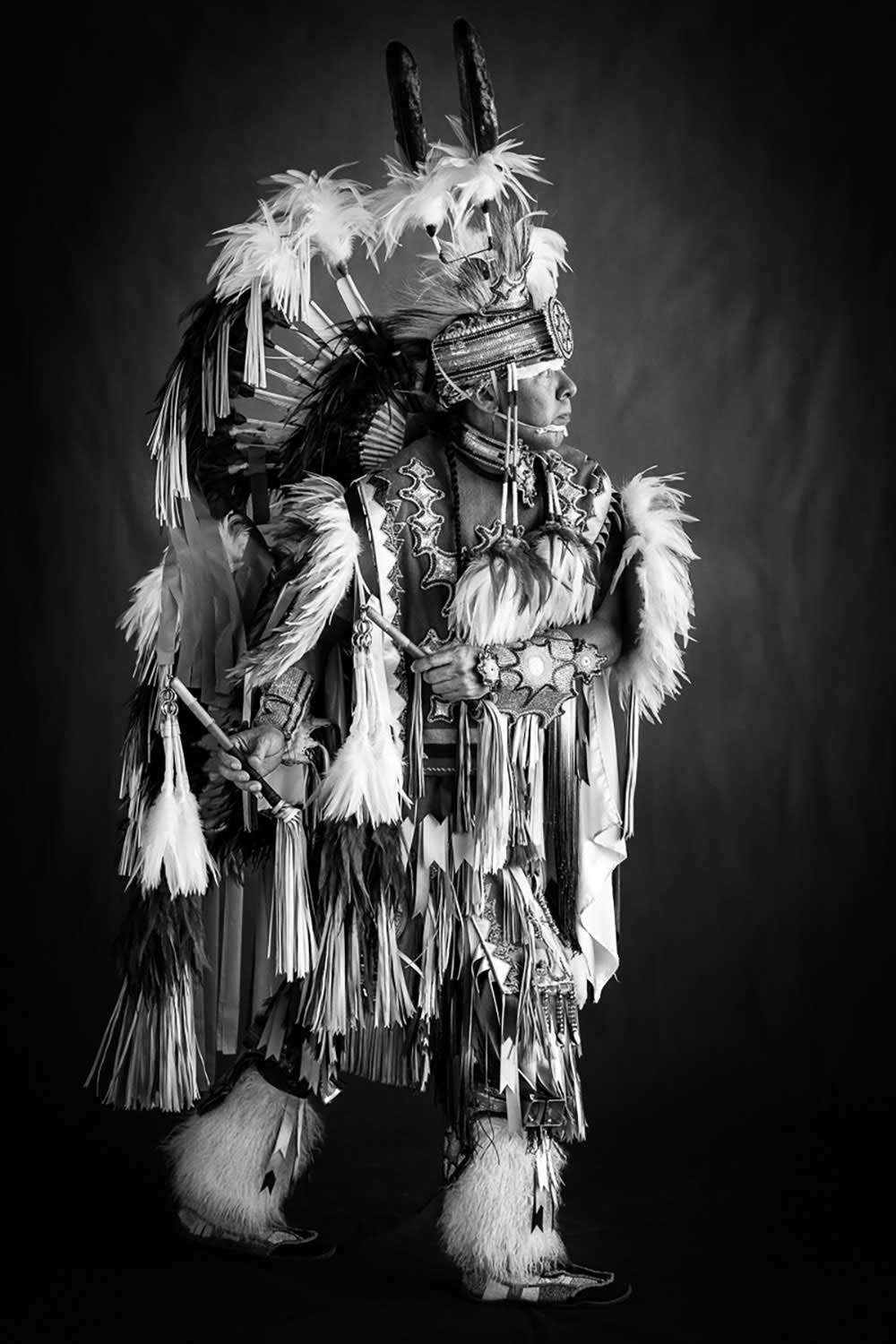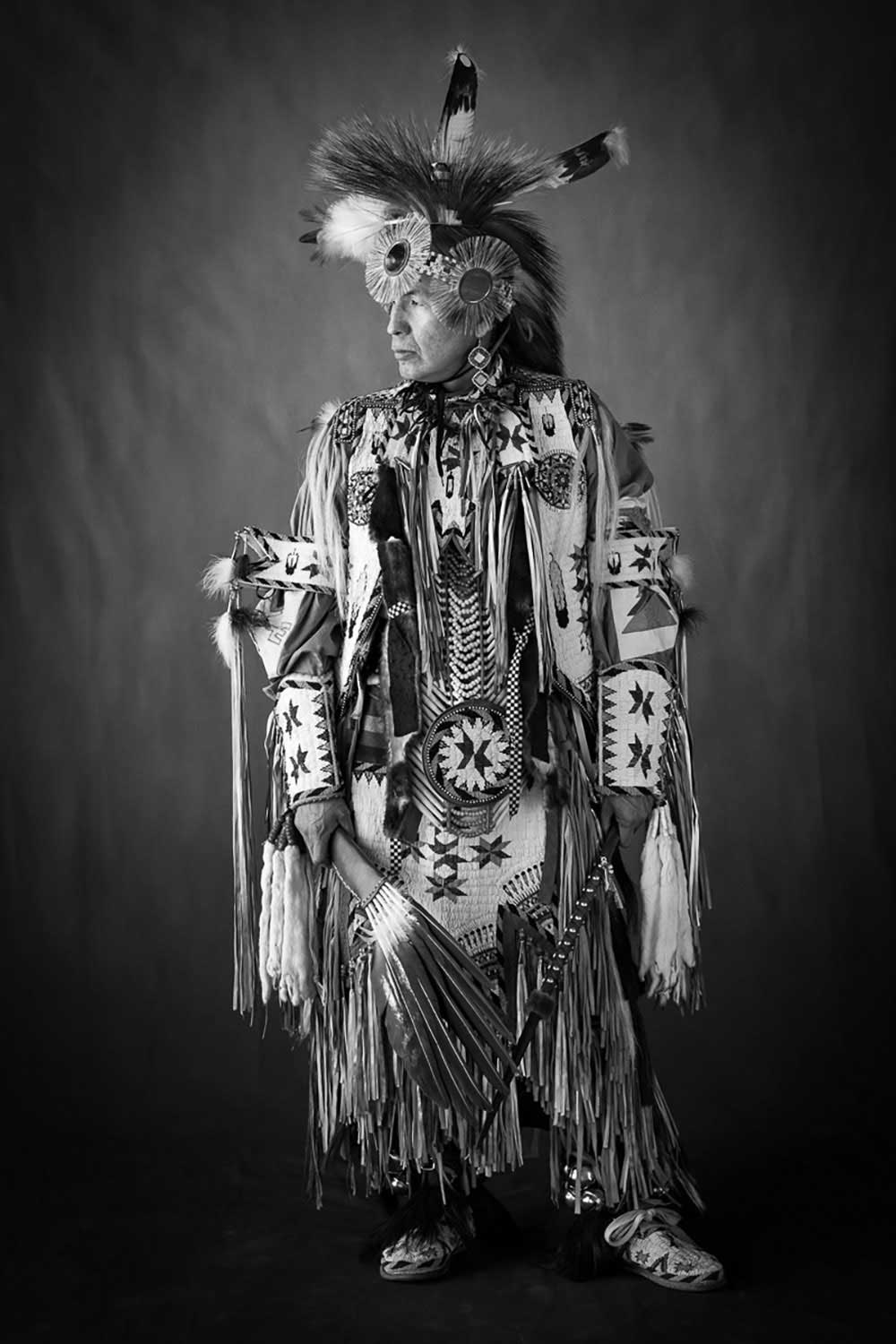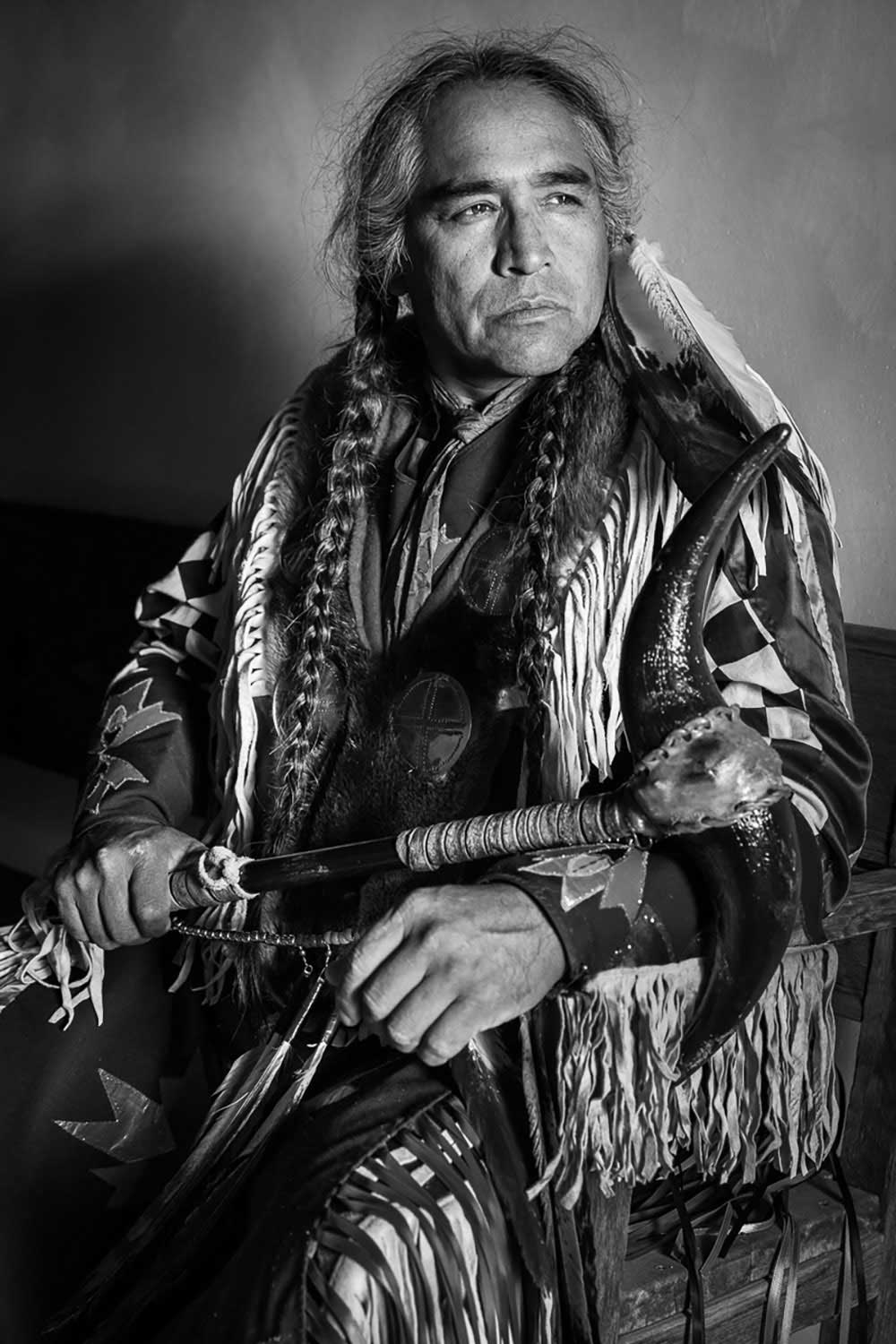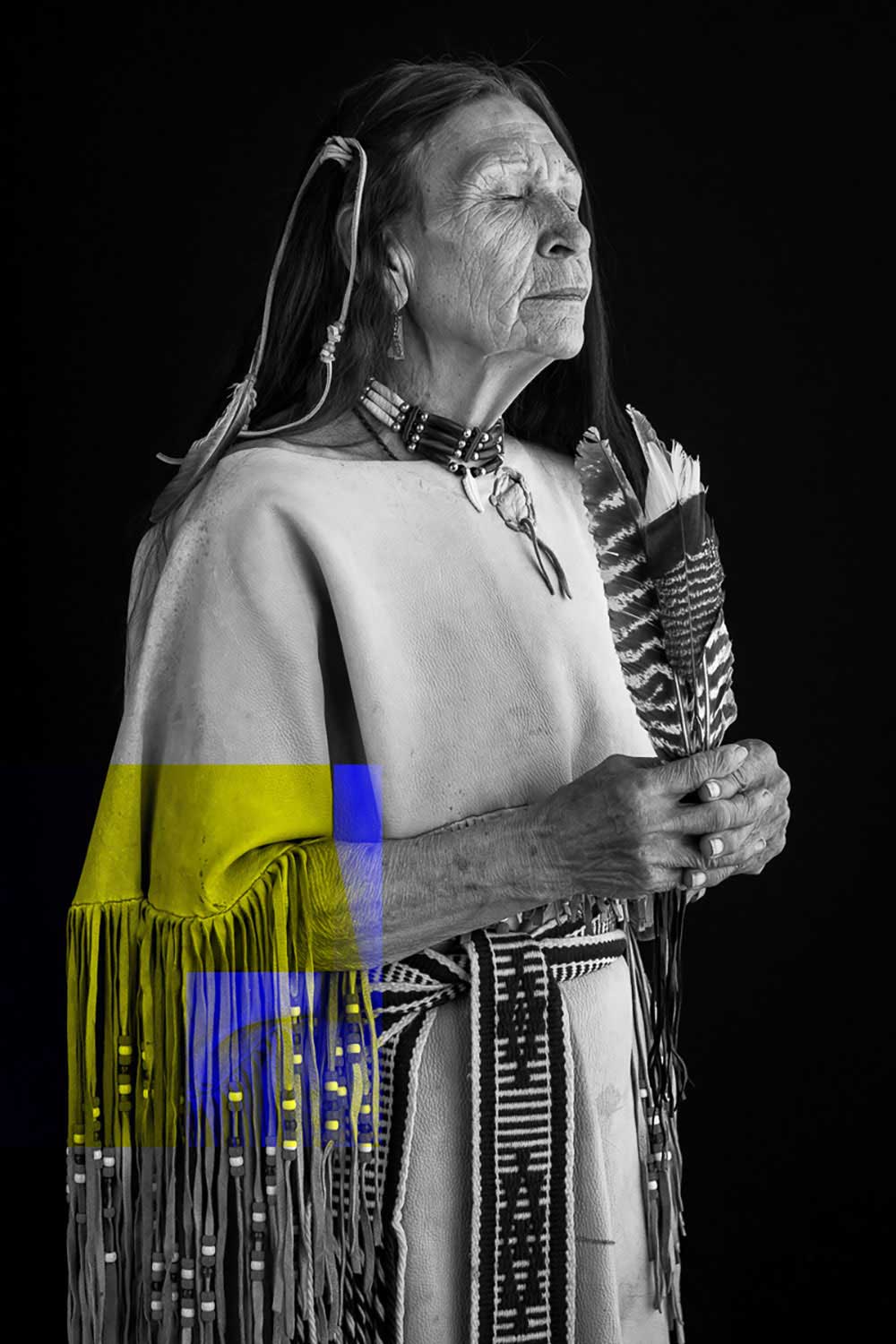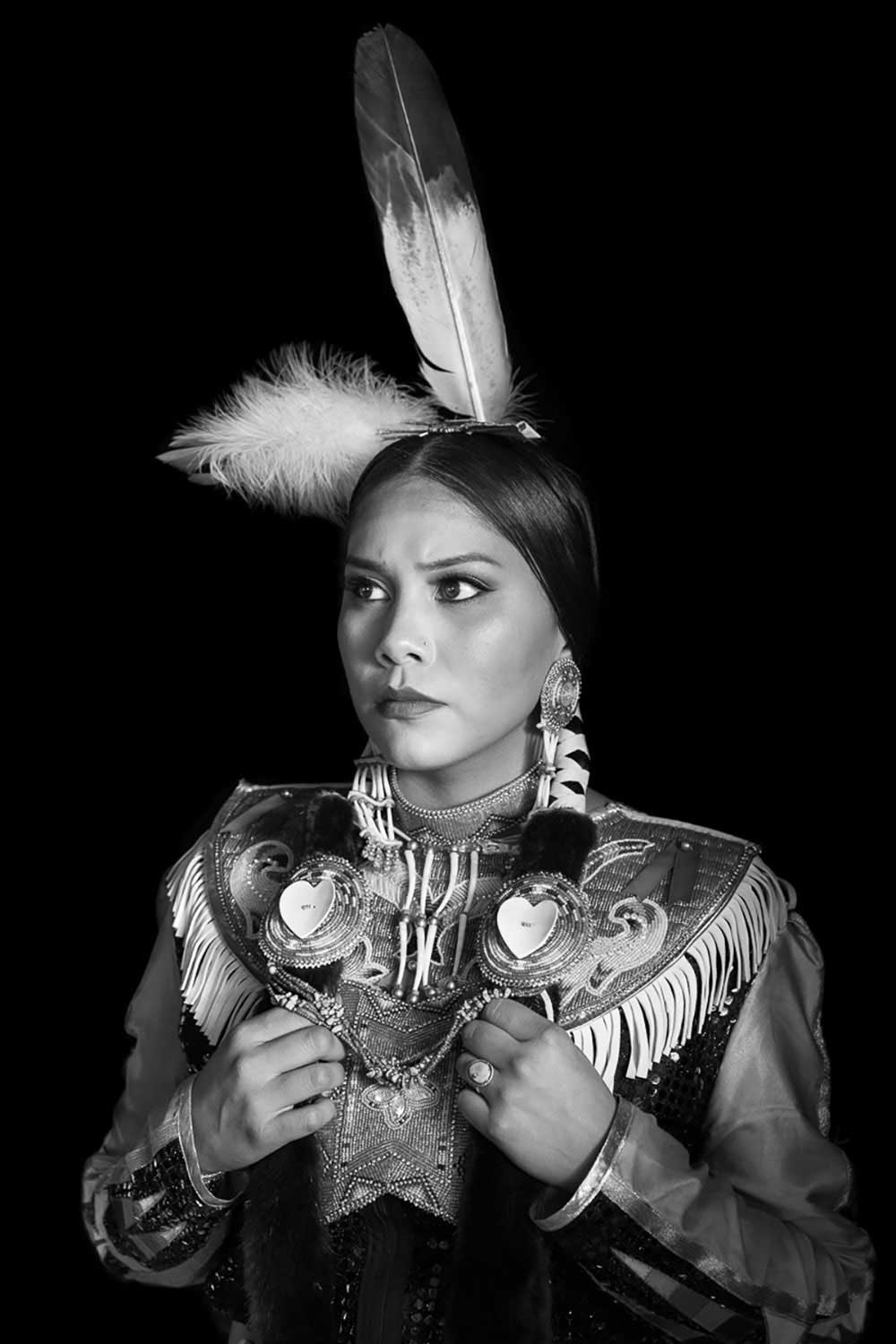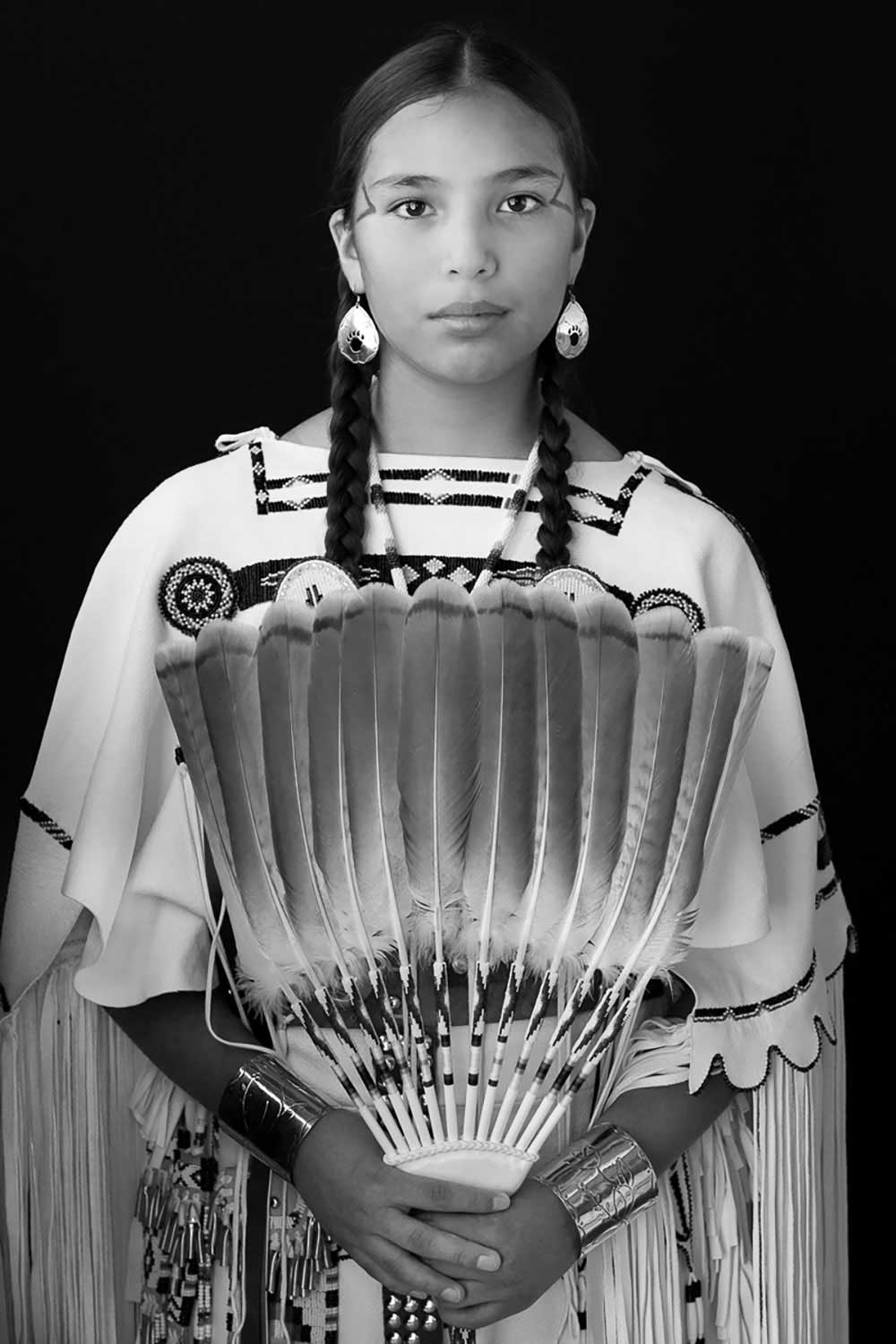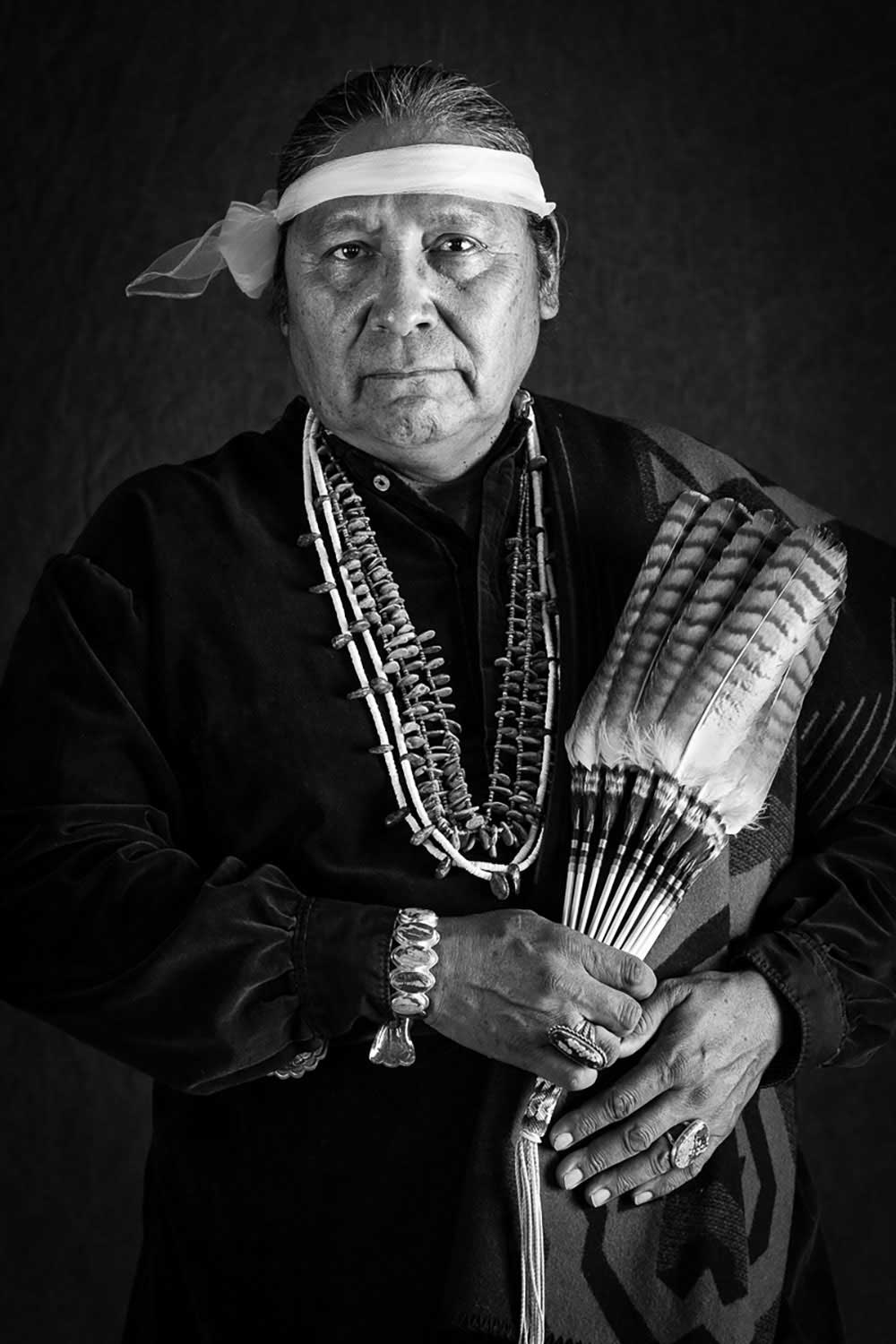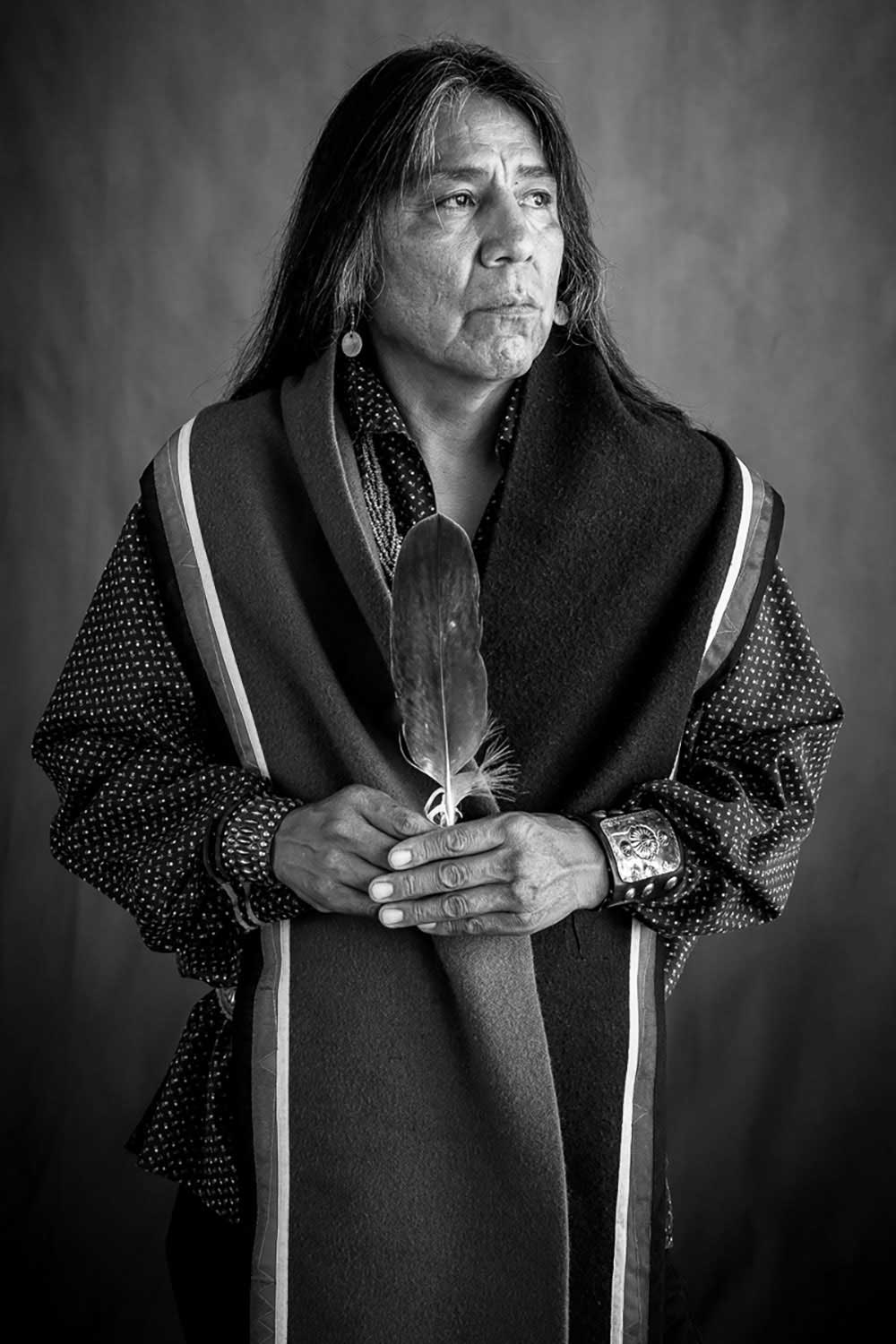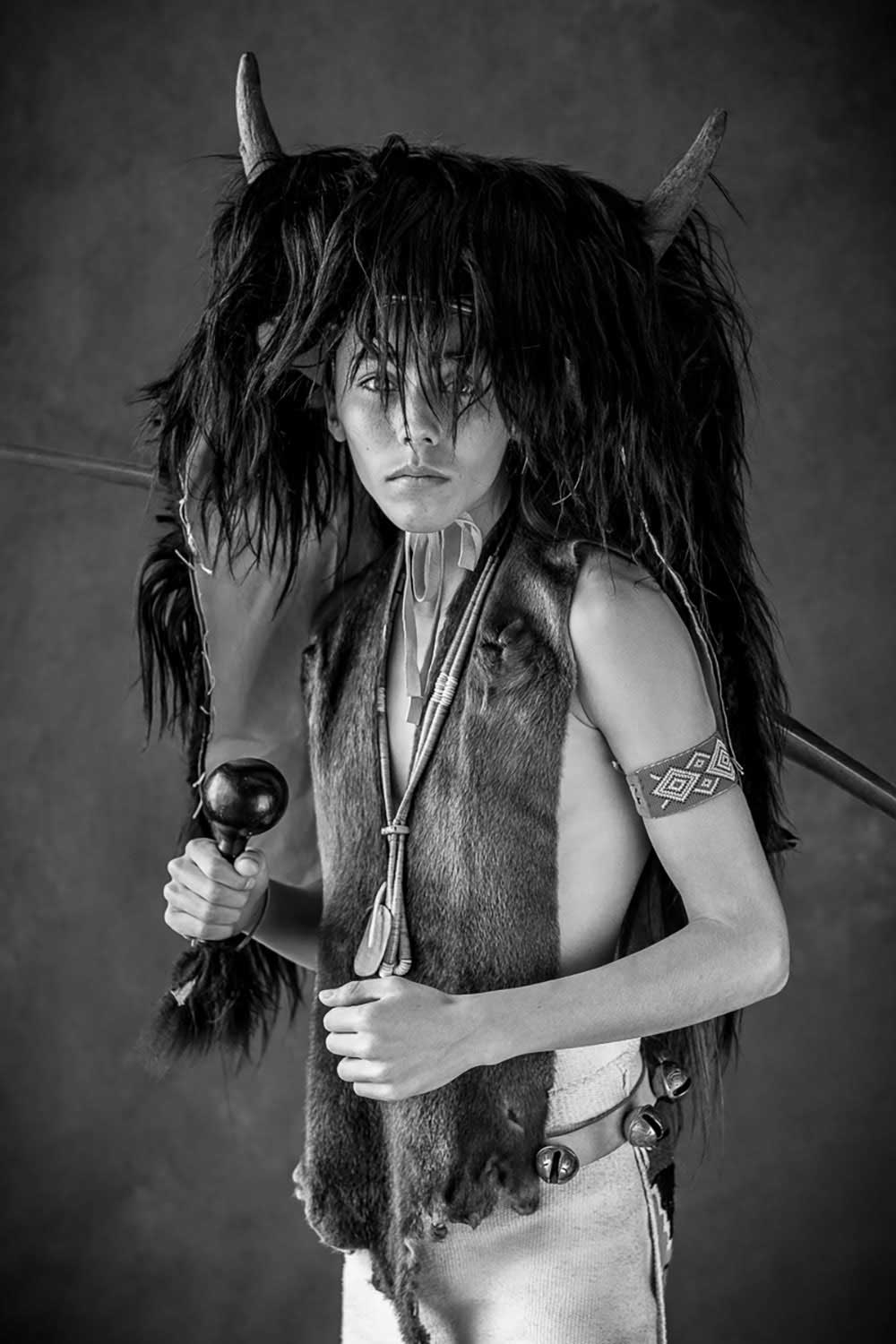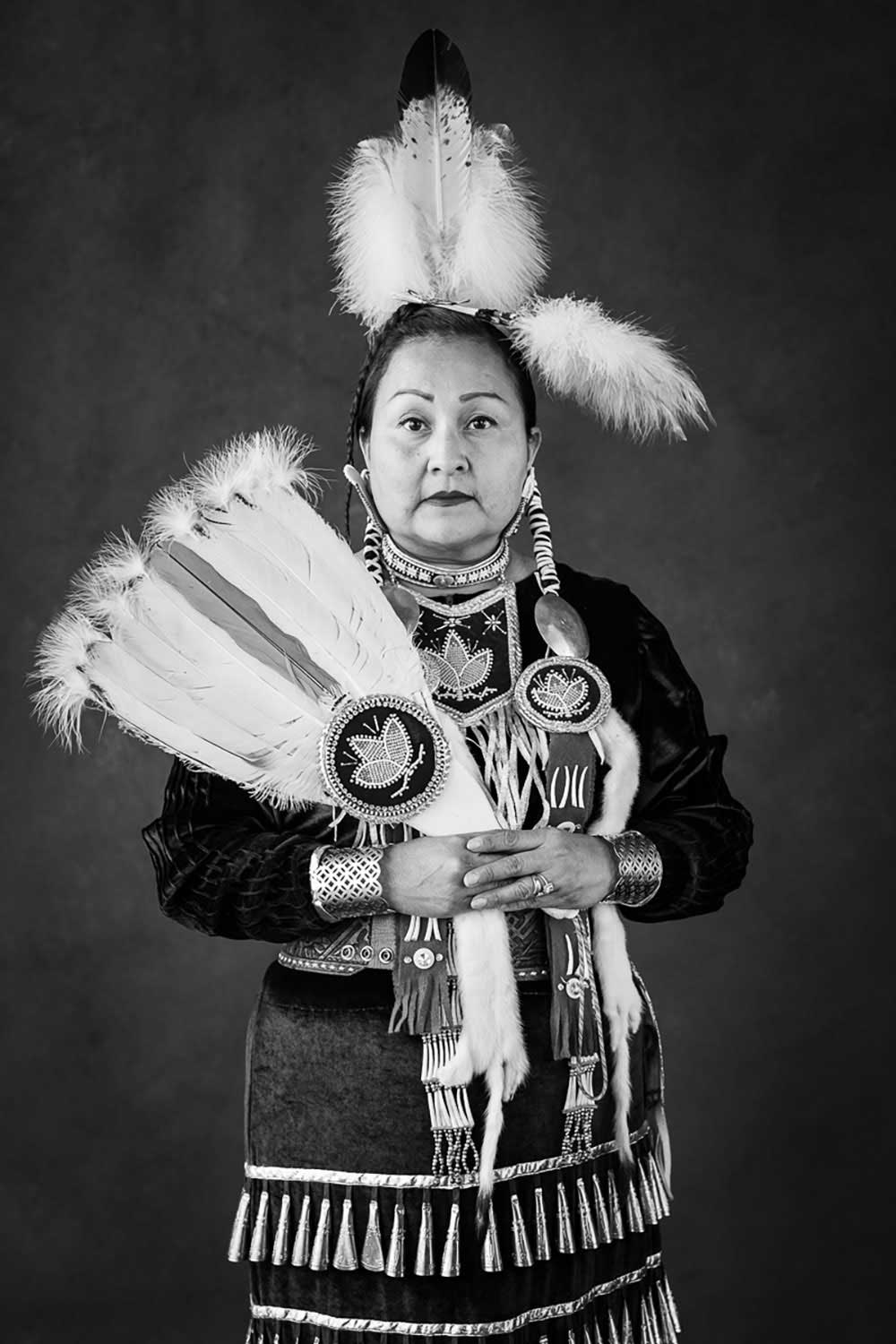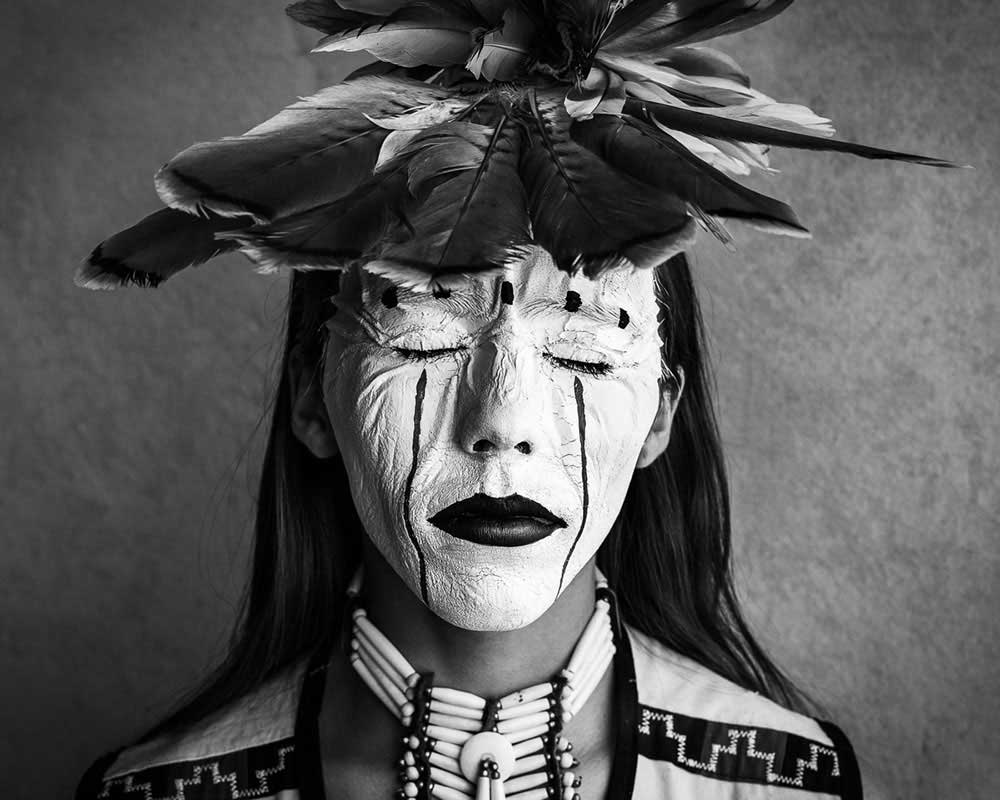I began making portraits of Native Americans several years ago when I was introduced to Anthony Parker. Anthony is a member of the Omaha tribe and a celebrated pow wow dancer. I photographed him near Santa Fe, New Mexico, not far from his home in Albuquerque.
He arrived in street clothes and unloaded several big bins and suitcases from his car. Inside was his collection of traditional costumes, headdresses, jewelry and regalia, all of the items handmade by local artisans and members of the Native American community. Off he went to change. And, some thirty minutes later, Anthony re-emerged totally transformed. The materials, craftsmanship, colors, designs and beauty of his garments and regalia amazed me. That photo session sparked my interest in Native American culture and, over the last several years, I’ve had the good fortune to meet and photograph members of many of the tribes and pueblos in New México, Colorado and Arizona.
Some of the people that I’ve photographed participate in pow-wows and other celebrations as dancers or musicians. Others are talented craftspeople that make beautiful traditional clothing, jewelry and regalia. Some are teachers, storytellers, IT professionals, horse trainers, cowboys, rodeo competitors, community leaders, activists or students. Although they come from different tribes and pueblos, have different jobs and careers, they all share a strongly held commitment to celebrate, maintain and pass along to future generations the fundamental elements of their tribal culture, language, religion and practice. They are keepers of tradition.
Many of my early Native American portraits were in color to showcase the brilliant designs, beautiful materials and extraordinary craftsmanship of the traditional clothing worn by my subjects. Over time, however, I came to realize that my color photographs were as much about the clothing as they were about the people themselves. I was reminded of the words of legendary Canadian photographer Ted Grant:
“When you photograph people in color, you photograph their clothes. But when you photograph people in black and white, you photograph their souls.”
I began processing my images in monochrome and loved the resulting simplicity, elegance and focus on the subject. That isn’t to say the costumes and regalia are unimportant. Quite the contrary. They are an integral part of the Native American tradition and culture. And I believe that the beauty, intricacy, patterns and textures are fully revealed through these monochrome images. But not in a way that distracts from the subject.
These portraits are meant to document, honor and celebrate Native American culture through the people I’ve photographed. I hope the images in this collection communicate the pride that each subject carries for their heritage and their community, and honors their commitment to keep traditions from vanishing.
About Ron Cooper
Ron Cooper’s photographs celebrate humanity. Cooper travels extensively to explore places and cultures, and to meet and photograph people who he “introduces” to viewers through portraiture. Since 2016, Cooper’s award-winning images have been featured in more than thirty-five juried group exhibitions in the United States and Europe. In addition, his work has been presented in five solo exhibitions.
His photographs have been published in consumer magazines, trade publications and photography journals. His new book, We Are Santa, features portraits and profiles of more than 50 professional Santa Clauses and will be released by Princeton Architectural Press (N.Y.) in mid-2020. [Official Website]



